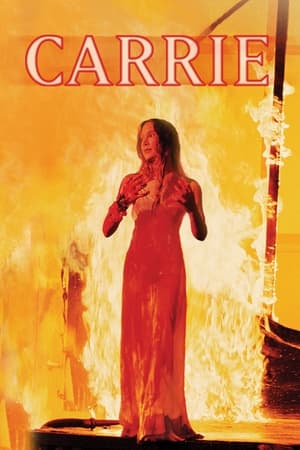
Carrie
Brian De Palma's Carrie (1976) remains an iconic adaptation of Stephen King's novel, blending psychological horror with deeply human themes of alienation and vengeance. The film’s portrayal of high school life, social cruelty, and supernatural terror is deeply affecting, resonating with audiences even decades later. From its infamous opening locker room scene to the chaotic prom climax, De Palma's direction demonstrates a masterful control of mood and pacing. The visual style, characterized by long takes, slow motion, and the daring use of split-screen during the prom sequence, creates a cinematic experience that is both intimate and expansive. These techniques pull viewers into Carrie’s inner world while amplifying the horror of her ultimate revenge. The production itself is a marvel for its time, achieving a balance between the surreal and the real. The careful choreography of the prom scene, where chaos is unleashed in a ballet of destruction, reflects De Palma’s meticulous eye for detail and his ability to innovate under pressure. It’s worth noting that some of the film's most memorable sequences, like the split-screen prom massacre, arose out of budgetary constraints—proving De Palma's ability to turn limitations into creative triumphs. The performances elevate the material further, with Sissy Spacek's portrayal of Carrie standing out as both vulnerable and haunting. The supporting cast effectively embodies the oppressive social dynamics of high school, creating a believable and suffocating environment for the protagonist. Understanding De Palma’s personal history adds another layer to the film’s intensity. His exposure to the visceral realities of his father’s work as a surgeon shaped his comfort with the graphic and the grotesque, evident in the film’s bloody moments. Additionally, De Palma's own experience trailing his father to uncover an affair—an event he later described as formative—infuses his work with themes of voyeurism, psychological tension, and human frailty. These personal elements lend Carrie a raw authenticity that transcends its horror genre trappings. Despite the controversy surrounding its explicit content, Carrie avoids gratuity in favor of storytelling. De Palma’s bold choices underscore the film’s central themes rather than overshadow them, making it as much a character study as a tale of terror. The film's success helped cement his reputation as a provocative yet deeply skilled filmmaker, unafraid to explore the darker corners of human experience. Revisiting Carrie highlights why it remains a classic. Its blend of compelling performances, innovative cinematography, and psychological depth sets it apart not only from other adaptations of King’s novel but also from modern horror films attempting similar themes. De Palma’s ability to channel his personal experiences into his art gives Carrie an emotional resonance and cinematic flair that continues to captivate audiences.
